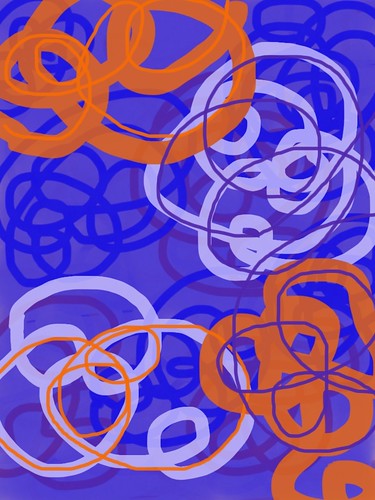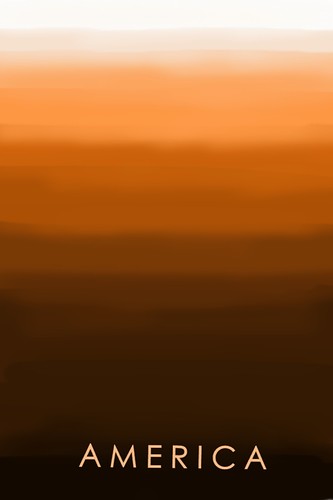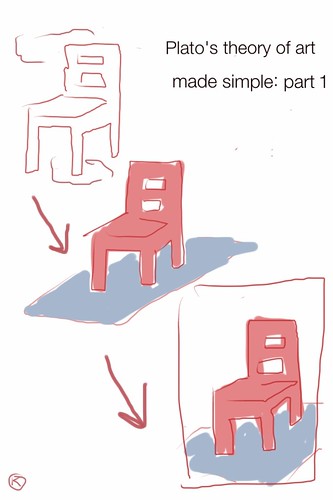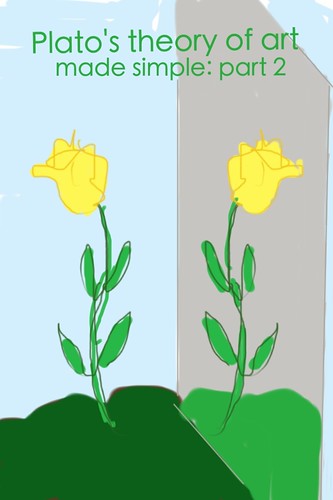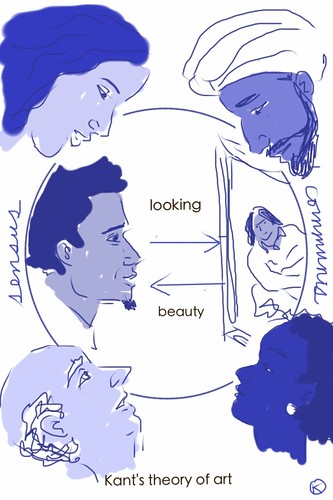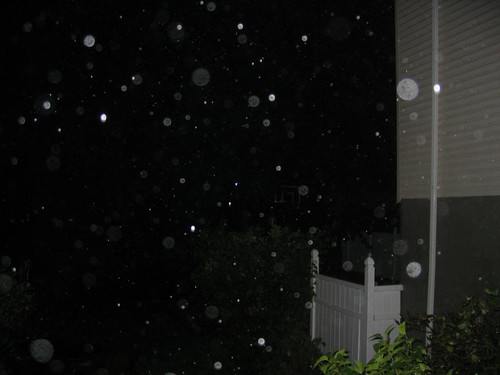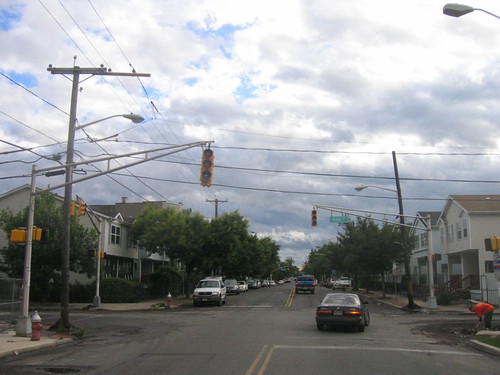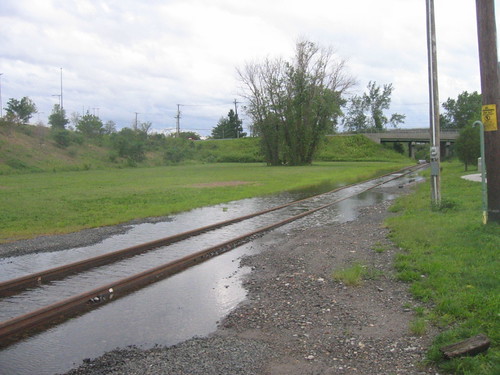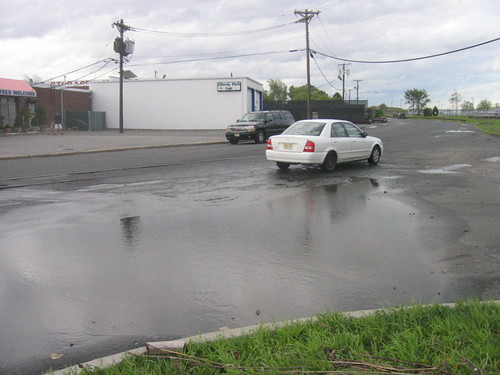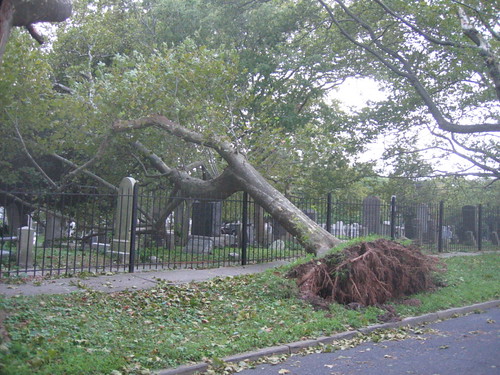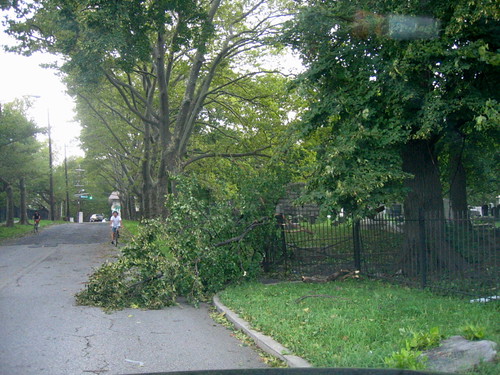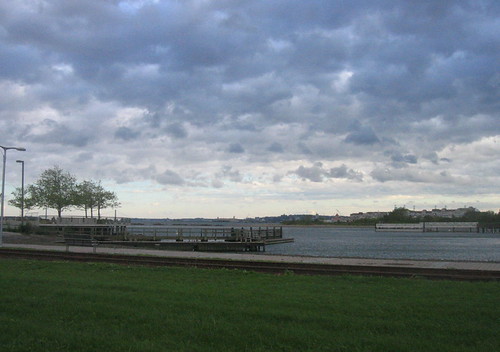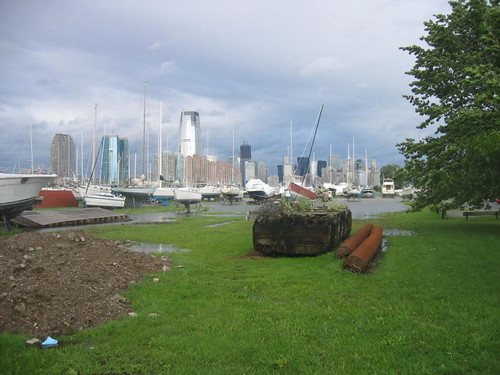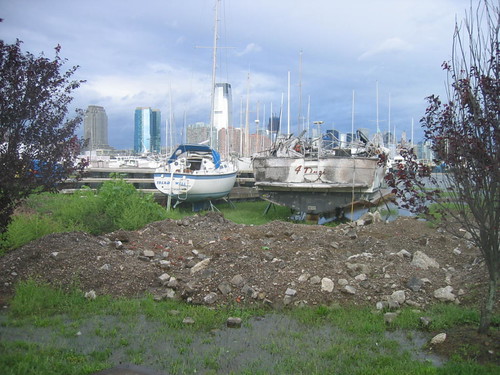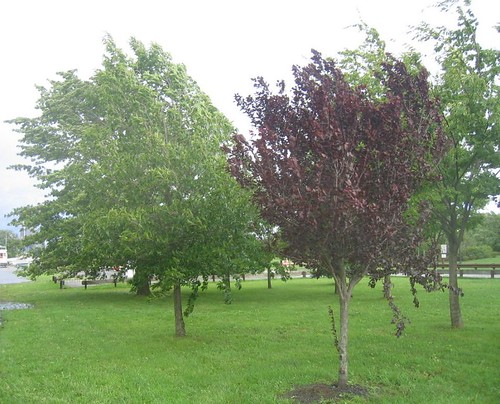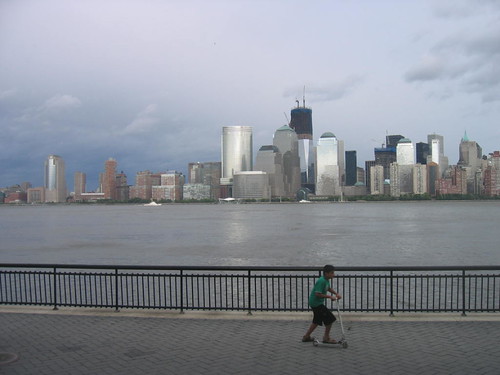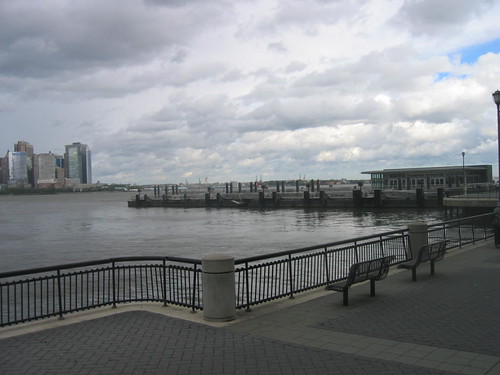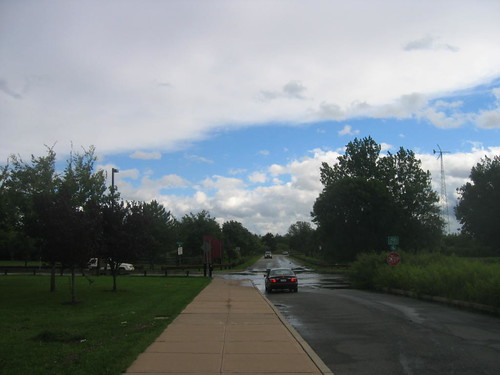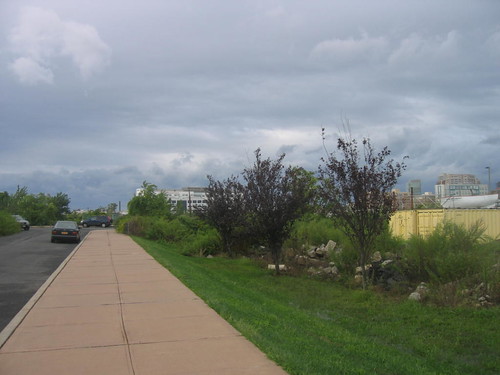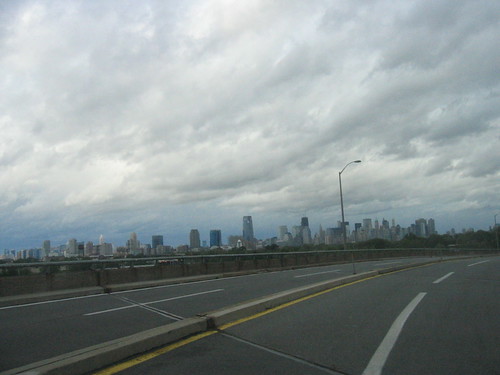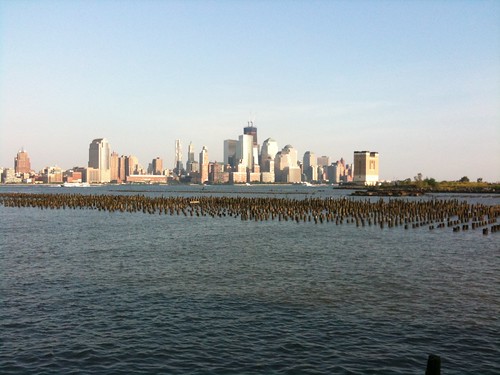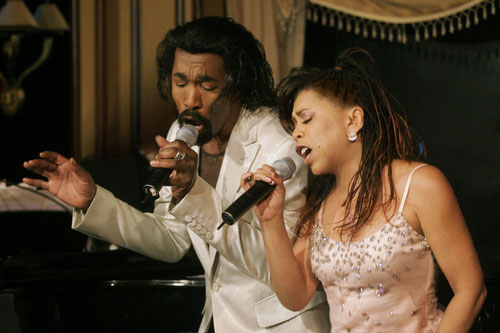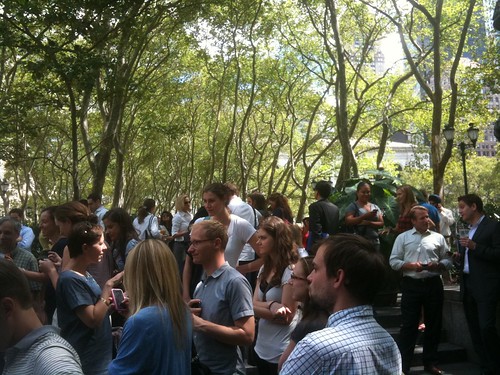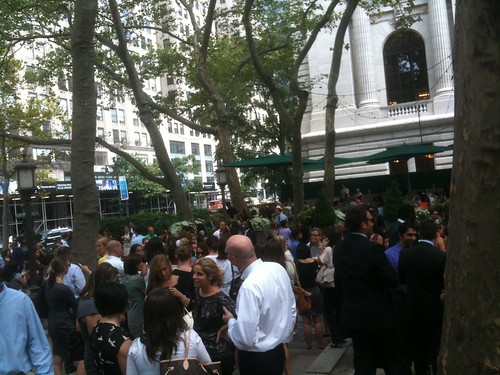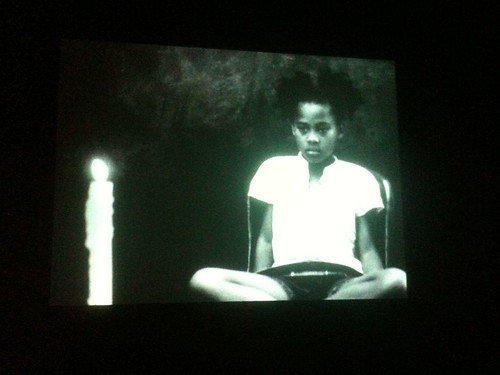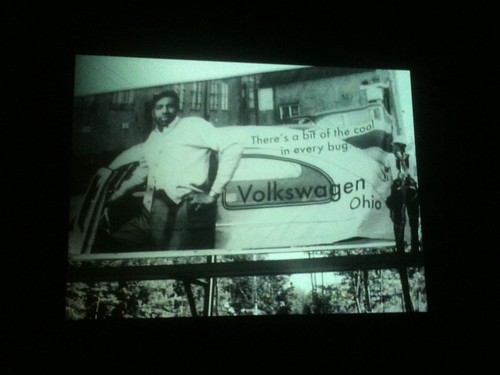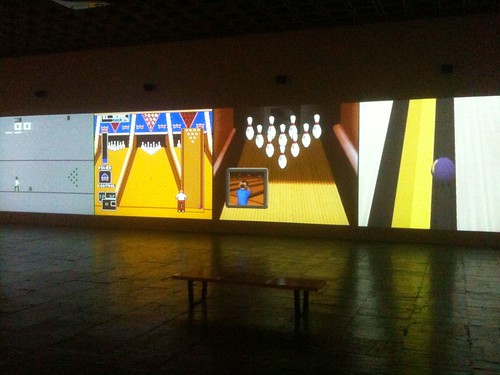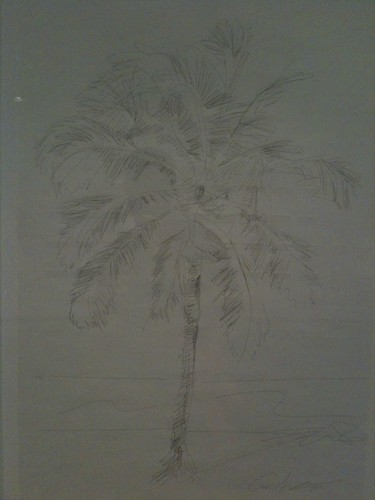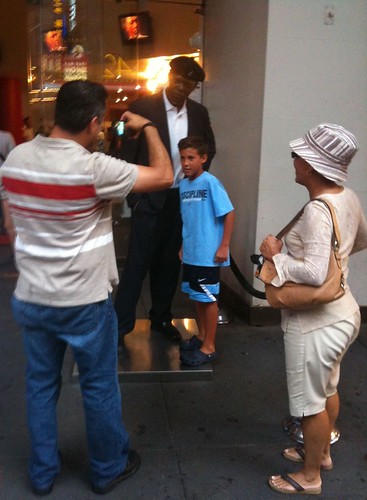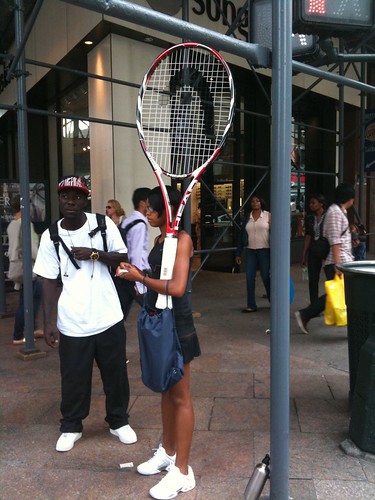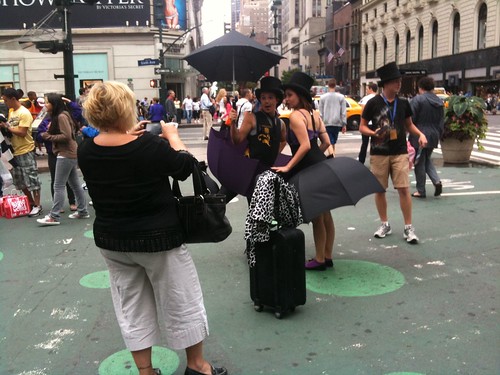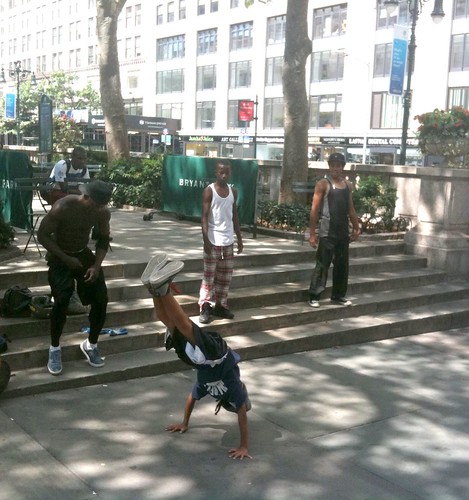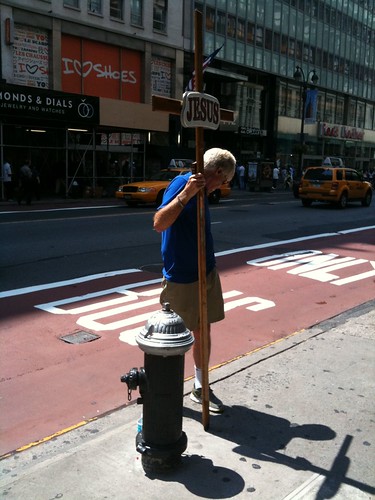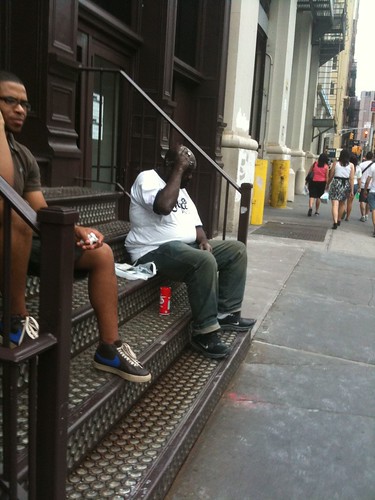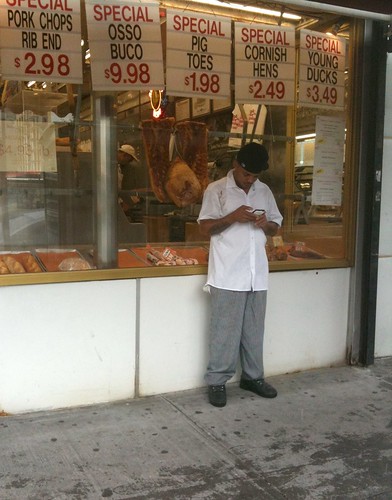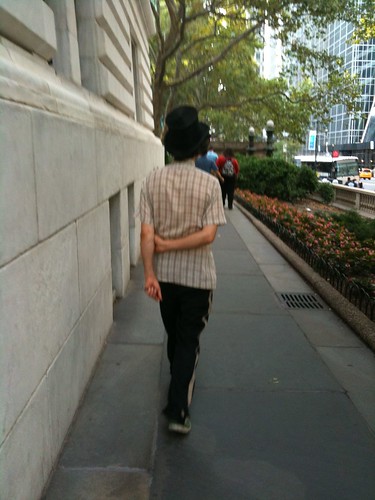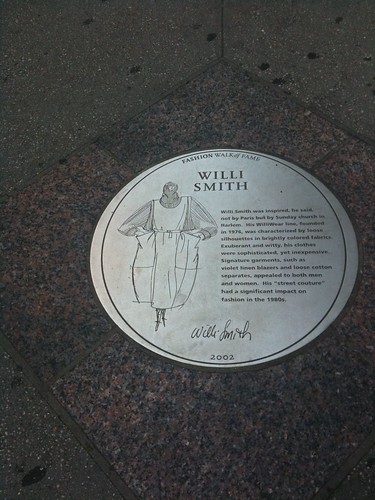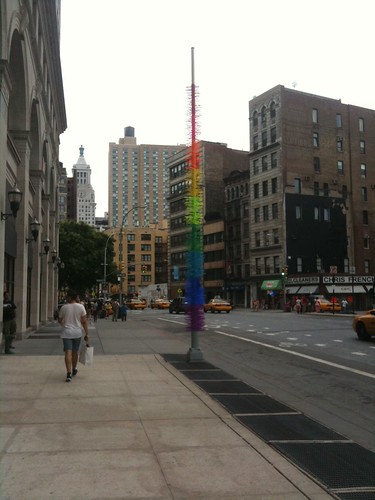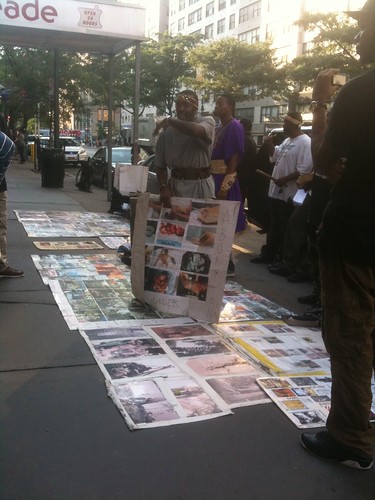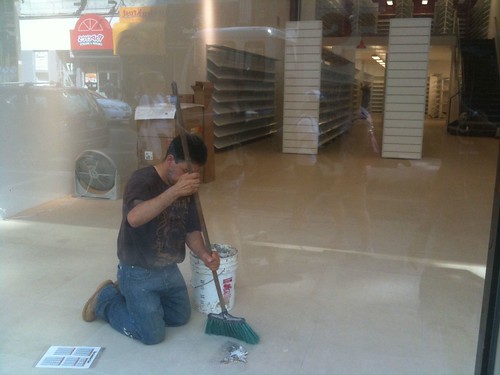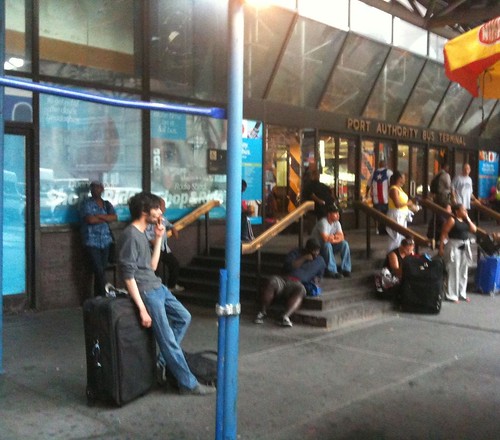One of my avatar-heroes in iDrawing/iArt, David Hockney (1937-) continues to push the boundaries of his artistic practice, as Martin Gayford discusses in his article "The Mind's Eye," in the current (September/October 2011) issue of MIT's Technology Review. He recounts how Hockney has been using a special rig, holding 9 high-definition cameras, to view and photograph nature scenes, simulating and expanding the experience of (the) human eye(s) and cameras. With a small crew he travels and photographs moving and still settings, in some cases the same ones but during differing seasons.
Together these produce works and a visual experience akin, Hockney argues, to and yet distinct from that of human vision, which usually entails two lens and complex, ever-changing light, depth, spatial, and color perception, but the resultant pieces also differ from the experience of a single lens digital, 35-mm or movie camera. They are also akin to but distinct from Hockney's photomosaics and collage photographs (images that really reoriented my way of thinking about photography for a while) of the 1980s. Hockney has been presenting the resulting pieces as 18-screen videos (moving pictures in the literal sense), though it's not clear when they'll be on exhibit.
Hockney has also continued digital drawing, having moved from a tablet and stylus to his iPhone, on which he has produced his now celebrated daily drawings of flowers, outdoor scenes, and abstractions, and then onto his iPad, on which he has enlarged the iPhone images and undertaken really remarkable outdoor drawings that mirror some of his most recent paintings and photographs. The article reproduces one of his pieces using that hardware, and Brushes, which is another popular iPhone and iPad drawing software.
This October, Gayford's new book, A Bigger Message: Conversations with David Hockney, will be available, as will some of those iPhone and iPad drawings, as part of the exhibit "David Hockney's Fresh Flowers: Drawings on the iPhone AND iPad," at the Royal Ontario Museum in Toronto, October 8, 2011 through January 1, 2012.
Hockney's work and daring have always inspired me, and I intend to keep exploring what sorts of very simple--such as the abstractions below--and very complex possibilities exist with both of these two technologies (and any new ones Apple develops that I can get my hands, even second and third ones, on). Yesterday I wrote about playing with Sketchbook Pro for the iPad and some of the differences with the iPhone's version of Sketchbook (Mobile), which I've increasingly familiarized myself with. I posted a few abstractions and illustrations I'd done on the iPhone, so today here are a few recent life portraits I undertook on the iPad, along with some iPhone abstract drawings.
LIFE PORTRAITS (drawn right on the spot, not from photos)

Self-portrait, at Joe's Coffee, Manhattan, iPad drawing
(last year I drew a self-portrait, one of my first in about 20 years, upon turning 45, so here's one for this summer. I did look in the mirror in front of me a few times, unlike last year, when I drew myself from memory)
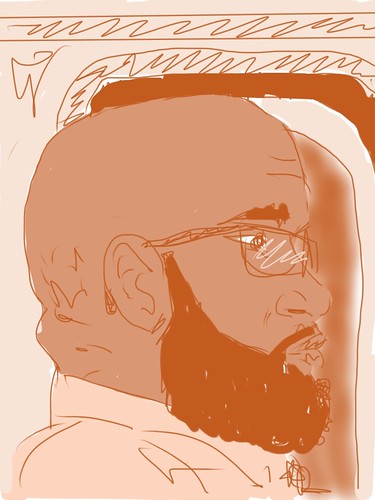
Path conductor, underneath the Hudson, iPad drawing
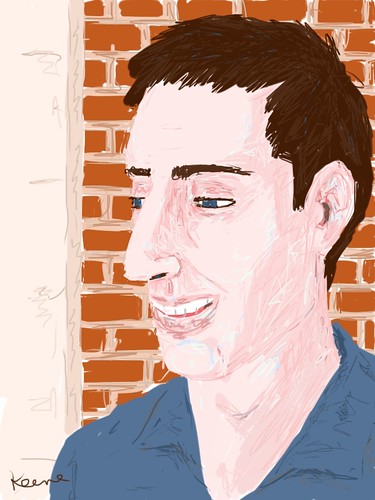
Man at café, Manhattan, iPad drawing
ABSTRACTIONS
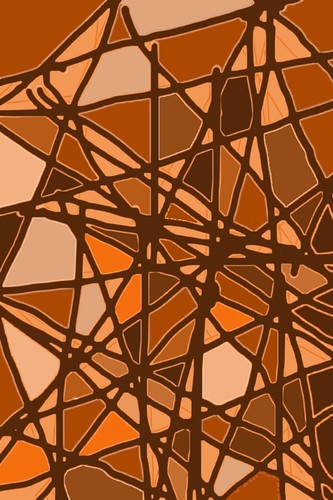
Jerusalem (I), iPhone drawing

Jerusalem (II), iPhone drawing

Transatlantic, iPhone drawing

Las Vegas, iPhone drawing
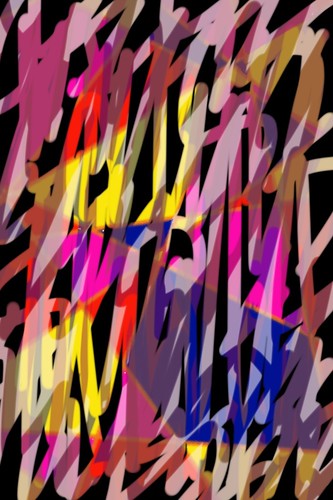
Las Vegas (II), iPhone drawing

Ellsworth, iPhone drawing
Together these produce works and a visual experience akin, Hockney argues, to and yet distinct from that of human vision, which usually entails two lens and complex, ever-changing light, depth, spatial, and color perception, but the resultant pieces also differ from the experience of a single lens digital, 35-mm or movie camera. They are also akin to but distinct from Hockney's photomosaics and collage photographs (images that really reoriented my way of thinking about photography for a while) of the 1980s. Hockney has been presenting the resulting pieces as 18-screen videos (moving pictures in the literal sense), though it's not clear when they'll be on exhibit.
 |
| A still from the 18-screen video May 12th 2011 Rudston to Kilham Road 5 PM. Credit: ©David Hockney |
Hockney has also continued digital drawing, having moved from a tablet and stylus to his iPhone, on which he has produced his now celebrated daily drawings of flowers, outdoor scenes, and abstractions, and then onto his iPad, on which he has enlarged the iPhone images and undertaken really remarkable outdoor drawings that mirror some of his most recent paintings and photographs. The article reproduces one of his pieces using that hardware, and Brushes, which is another popular iPhone and iPad drawing software.
This October, Gayford's new book, A Bigger Message: Conversations with David Hockney, will be available, as will some of those iPhone and iPad drawings, as part of the exhibit "David Hockney's Fresh Flowers: Drawings on the iPhone AND iPad," at the Royal Ontario Museum in Toronto, October 8, 2011 through January 1, 2012.
Hockney's work and daring have always inspired me, and I intend to keep exploring what sorts of very simple--such as the abstractions below--and very complex possibilities exist with both of these two technologies (and any new ones Apple develops that I can get my hands, even second and third ones, on). Yesterday I wrote about playing with Sketchbook Pro for the iPad and some of the differences with the iPhone's version of Sketchbook (Mobile), which I've increasingly familiarized myself with. I posted a few abstractions and illustrations I'd done on the iPhone, so today here are a few recent life portraits I undertook on the iPad, along with some iPhone abstract drawings.
LIFE PORTRAITS (drawn right on the spot, not from photos)

Self-portrait, at Joe's Coffee, Manhattan, iPad drawing
(last year I drew a self-portrait, one of my first in about 20 years, upon turning 45, so here's one for this summer. I did look in the mirror in front of me a few times, unlike last year, when I drew myself from memory)

Path conductor, underneath the Hudson, iPad drawing

Man at café, Manhattan, iPad drawing
ABSTRACTIONS

Jerusalem (I), iPhone drawing

Jerusalem (II), iPhone drawing

Transatlantic, iPhone drawing

Las Vegas, iPhone drawing

Las Vegas (II), iPhone drawing

Ellsworth, iPhone drawing



